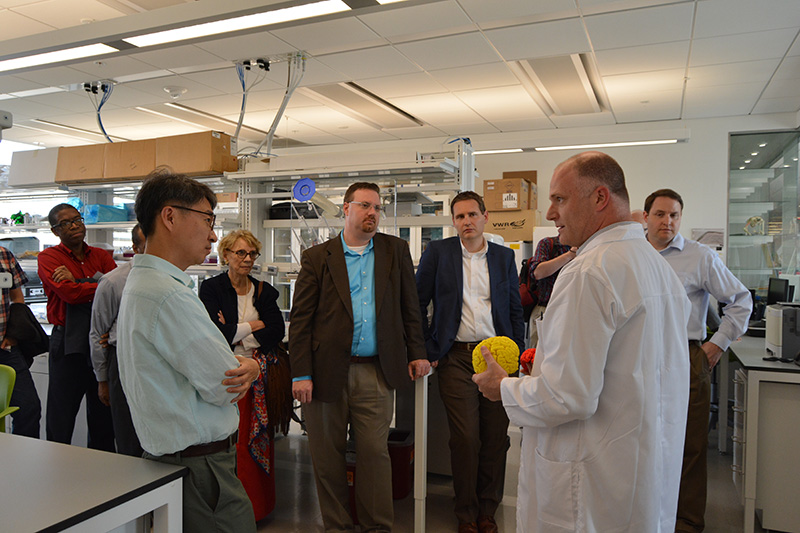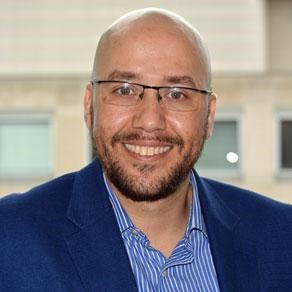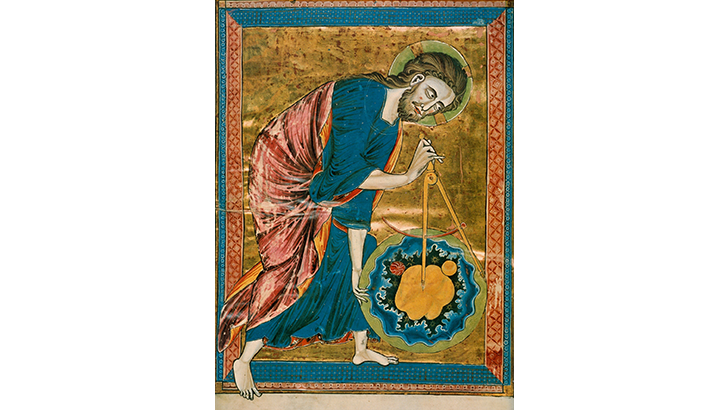The Science for Seminaries Initiative: Bringing Leading-Edge Science to the Theology Classroom
For the past five years, I have been involved in helping to administer the Science for Seminaries initiative through the Dialogue on Science, Ethics, and Religion (DoSER) program at the American Association for the Advancement of Science (AAAS). I work to connect scientists with seminary faculty in order to bring leading-edge science to seminaries to prepare future religious leaders to engage with science in their own contexts. As a seminary graduate myself, I think it is of paramount importance that, in a rapidly advancing scientific and technological world, religious leaders be prepared to grapple with the issues and concerns such advances bring. What better place to have this engagement than in theological education institutions, where students can explore science as they learn how to think theologically, ethically, and pastorally. The objective of this essay is to offer an overview of the Science for Seminaries initiative from the perspective of AAAS, its principal sponsor and facilitator.
An Imperative for Theological Education
There is little debate that discoveries and advances in science and technology continue to have significant impacts on our lives. In addition to shaping and informing our understanding of the universe and our place within it, science and technology have a profound effect on health and wellness, education, economic opportunity, media access, and the environment. Theologians, ministers, and those who exercise other forms of faith-based communal leadership are important interpreters and mediators of changing technological realities and the ethical issues that arise from those shifts. For example, with the development of gene-editing techniques comes the exciting possibility of curing genetic diseases and easing significant suffering. This excitement, however, also generates important ethical concerns, ranging from questions of equal access to the fruits of this science, to judgments about which traits are “problematic” and thus appropriate objects of this research and whether or not such technologies should be used to develop new kinds of life. Other scientific advances—such as in the areas of artificial intelligence and the discovery of exoplanets—raise new and equally complicated ethical issues. All of this suggests that how well equipped future religious leaders will be to address these and other issues raised by science is contingent upon how well their own theological and ministerial education has prepared them to do so. Simply put, the very realities of scientific and technological advancement place a demand on graduate theological education to afford ordination candidates and other students opportunities to integrate into their own ministerial identities an ability to engage scientific issues and to accompany congregants in such an engagement.
The statistics strongly support the claim that preparing theological students and professors to effectively engage issues related to science and technology is essential in their developing the competencies they need to have meaningful conversations about such issues with their constituents. Roughly 84% of the US population is religiously affiliated, and a 2014 survey conducted by the AAAS and Elaine Howard Ecklund of Rice University found that religious Americans, in particular Evangelical Christians, often consult their pastors when they have questions regarding science.1 Although the data reveal the crucial role faith leaders play in framing new discoveries in science and technology for those they lead, they also show that a large percentage of faith leaders receive little or no training in how to grapple with science and technology from a theological perspective.
In her essay for this edition of Spotlight, my colleague from the Association of Theological Schools (ATS), Dr. Deborah Gin, breaks down the data collected from student surveys in a way that makes abundantly clear the need for a more robust and intentional integration of science into graduate theological curricula. One of the major takeaways from these data is the lack of any formal science education in the higher education portfolios of most students studying for careers in theology and ministry.
Bridging the Gap: The Science for Seminaries Initiative
In 2014, the AAAS’s Dialogue on Science, Ethics, and Religion (DoSER) program, in partnership with ATS, launched the Science for Seminaries initiative, a three-year project designed to be part of a broader AAAS effort to work with graduate schools of theology and ministry to integrate science into their curricula. This initiative has two principal goals that embody an outworking of AAAS’s mission of “advancing science, serving society.” The first is to provide resources to communities that need them—especially groups that are often ignored or underrepresented in science communication and engagement efforts. The second is to improve the science-faith dialogue by resourcing a diverse public with the tools necessary to better understand and benefit from the fruits of science.
The Science for Seminaries initiative is a project funded by the John Templeton Foundation. To date, DoSER has awarded subgrants to twenty-six ATS-accredited seminaries2 from three ecclesial families: Roman Catholic/Orthodox, Evangelical Protestant, and Mainline Protestant. The overarching goal of the project is to prepare future religious leaders to engage with their congregations and surrounding communities on topics and issues related to science and technology.
To accomplish this goal, the initiative pursues a set of carefully integrated objectives. One is to build networks and relationships between seminary faculty specifically committed to a deep and intentional engagement with science in their teaching, on the one hand, and local scientists, on the other. By connecting project faculty with local scientists, seminary faculty gain access to the latest scientific research. Local scientists serve as advisors to the project seminaries, recommending science resources, giving guest lectures in courses and participating in campus-wide events. A second objective is the introduction of science engagement into the culture of the theological education community. To this end, project seminaries typically host campus-wide events focused on issues in science that have particular import for graduate theological education. Building on these campus events, AAAS hosts an annual summer retreat that invites seminary faculty not involved in the seminary initiative to learn new pedagogical skills for integrating science into their own coursework. Retreatants participate in sessions on science integration in a variety of courses and are provided with syntheses of the latest science and technology resources relevant for classroom application.
Where We’ve Been and Where We’re Headed
A. Phase I (2014–2016)
Phase I of the initiative began in 2014 and ran until 2016. As mentioned above, the DoSER program partnered with ten seminaries/divinity schools representing a broad range of Evangelical Protestant, Mainline Protestant, and Roman Catholic traditions.3 The faculty who led the initiative’s efforts at their schools identified novel and fruitful ways to incorporate science into their curricula. Rather than creating new electives, initiative faculty integrated various sciences into a broad range of preexisting core courses in areas ranging from systematics and biblical studies, to church history and ethics.
In Phase I, more than seventy courses were revised and integrated with a specific focus on related science. Students studied a wide array of topics running the gamut from cosmology and discussions of the origins of the universe, to neuroscience and how neurodegenerative diseases affect human personhood. The redesign of these courses frequently included visits to science research labs and other science enrichment activities. For example, the project leader at Wake Forest School of Divinity took students to a neuroscience lab that offered seminarians an up-close-and-personal experience of a research laboratory. The students participated in a sheep brain dissection module, learning the anatomy and physiology of the brain. Likewise, a project leader at Columbia Theological Seminary who teaches courses in biblical studies took his students to the Georgia Aquarium to link a scientific understanding of biodiversity to related scriptural passages in the Book of Job. Additionally, faculty brought science directly to their students through field trips to museums and research labs, scientist guest-lectures, supplemental readings, science book clubs and film screenings, and sermon contests.

An interactive science engagement opportunity, Science for Seminaries cohort 1 project faculty visiting Dr. Chet Sherwood’s evolutionary neuroscience lab at George Washington University. Credit: Lilah Sloane.
Complementing these curricular revisions, the seminaries conducted campus-wide science events designed to invite the broader constituencies of their respective institutions into the conversation about the relevance of scientific engagement for theological education. This far-reaching exposure offered diverse opportunities for students to engage with scientific advances both inside and outside of the classroom. The number of campus-wide events that took place through the initiative provides another significant indicator of its success. Instead of the expected ten required events, the partner seminaries hosted at least sixty. These events ranged from conferences that attracted hundreds of attendees to smaller gatherings that focused on specific topics.
In Phase I, DoSER organized three separate faculty enrichment retreats in Maine and Oregon during the summer of 2016. These retreats were broken down by ecclesial family, and featured opportunities for students who participated in initiative-sponsored courses to share presentations of work they did related to the integration of science and theology. Seminary faculty presented on a variety of topics ranging from philosophy of science to biology and neuroscience, while at the same time being careful to include discussion of pedagogy and administration. We also invited faculty members from schools not yet affiliated with the Science for Seminaries initiative to submit applications to attend one of the three retreats in order to facilitate interest in the project beyond the ten schools involved in Phase I. As a result, AAAS received 123 applications and fourteen joint applications to fill thirty-seven participant slots. Applicants were faculty affiliated with 105 ATS-affiliated seminaries, representing approximately 38% of ATS member schools evenly divided among ecclesial families. This high level of interest demonstrates an appetite in the broader theological education community for engagement with science and technology.
Due to the success of the Phase I project, the seminaries project continues to offer seminarians forefront science in the classroom and connect seminary faculty to local scientists and resources.
B. Phase II (2018–2022)
Phase II of the initiative began in 2018 and will continue until 2022. This second phase adheres to the goals, objectives, and requirements established in Phase I, but with a few significant differences. Unlike the first phase, Phase II involves four cohorts of seven to nine seminaries each. Each cohort is expected to conduct eighteen months of programming at their institution in which they will fulfill the requirements of the project. All in all, AAAS plans to support thirty-two seminaries, bringing the total number of participating institutions to forty-two.
This new cohort has integrated a wide range of science topics and methodologies into the courses they have proposed for initiative-related revision. These topics and methodologies include an approach to human uniqueness rooted from the perspective of evolutionary biology, as well as the ways in which a scientifically grounded understanding of archaeology can enrich the methods of biblical exegesis and interpretation. Other topics faculty are planning to integrate into their courses include neuroscience, cosmology, anthropology, and advanced technology and its impact on society.
Achieving Sustainability through State-of-the-Art Resources
In order to ensure a sustained commitment to the goals of the initiative among participating institutions, AAAS is dedicated to providing them with access to appropriate state-of-the-art resources focusing on a wide range of scientific disciplines. For example: AAAS has begun providing all project seminaries and select project seminary libraries with subscriptions to its prestigious journal Science. AAAS has also invested considerable energy into an initiative-based website (www.ScienceforSeminaries.org) designed to provide faculty from participating institutions with media that can easily be incorporated into any number of pedagogical contexts. Key among these media is the Science: The Wide Angle film series, a cache of high-quality short videos presenting science topics tailored for use either in the graduate theological classroom or any number of related settings such as congregational adult-learning contexts. The series features some of the world’s leading scientists who, in conversation with historians and philosophers, explore scientific questions in a way conducive to providing the basis for informed and lively classroom discussions of any number of issues at the intersection of science and religion.
In addition to the film series, the website hosts over fifty seminary course syllabi revised to incorporate content related to science and technology. Tagged and organized by labels such as course area, seminary ecclesial background, and science topic, this collection demonstrates the range of ways theological faculty have facilitated student engagement with a vast array of scientific topics relevant to issues in theology and ministry. This aspect of the website is particularly useful for theology faculty interested in integrating science into their pedagogy. These syllabi provide a superb starting point for reflecting on the praxis of colleagues in theological education who have pioneered the effective integration of science into 21st-century education for careers in theology and ministry.
A Concluding Invitation
In addition to its being a valuable resource for theological educators committed to the science-religion conversation, the AAAS/DoSER website includes information on how to apply for a grant to be part of one of the remaining initiative cohorts, as well as for the annual summer retreats. Both are opportunities for ATS-accredited institutions to increase capacity for bringing science to their campuses and for faculty to enhance their related pedagogical skill sets.
On behalf of AAAS and the entire DoSER family, I invite you to visit the Science for Seminaries website and start, renew, or continue your engagement with science and technology in your own ministry as a theological educator.
1 Elaine H. Ecklund and Christopher Scheitle, “Religious Communities, Science, Scientists, and Perceptions: A Comprehensive Survey” (Paper Presentation, Annual Meetings of the American Association for the Advancement of Science, Chicago, IL, February 16, 2014). http://www.aaas.org/sites/default/files/content_files/RU_AAASPresentationNotes_2014_0219%20%281%29.pdf
2 These 17 Seminaries were: Andover Newton Theological Seminary, Bethany Theological Seminary, Catholic University of American Washington, DC, Columbia Theological Seminary, Concordia Seminary of St. Louis, MO, Howard University School of Divinity, Kenrick-Glennon Seminary, Jesuit School of Theology at Santa Clara University, Lutheran Theological Seminary at Gettysburg, McCormick Theological Seminary, Multnomah Biblical Seminary, Mundelein Seminary, Regent University School of Divinity, Sacred Heart Seminary and School of Theology, Seventh-day Adventists Theological Seminary of Andrews University, and Wake Forest University School of Divinity.
3 Those 10 seminaries were: Andover Newton Theological School, Catholic University of America Washington, DC, Columbia Theological Seminary, Concordia Seminary of St. Louis, MO, Howard University School of Divinity, Jesuit School of Theology at Santa Clara University, Lutheran Theological Seminary at Gettysburg, Multnomah Biblical Seminary, Regent University School of Divinity, Wake Forest School of Divinity.
 Curtis L. Baxter III, MTS is senior program associate for the American Association for the Advancement of Science (AAAS) where he works primarily on the Dialogue on Science, Ethics, and Religion (DoSER) project's Science for Seminaries initiative. The initiative aids seminaries in integrating leading-edge science into their core curricula. With a background in religious studies and biochemistry, Curtis earned a Master of Theological Studies from Wesley Theological Seminary. His focus while in seminary was ethics as well as historical and public theology. He is passionate about all things at the nexus of faith and the public square, including facilitating constructive conversations between people of faith and their communities on important issues.
Curtis L. Baxter III, MTS is senior program associate for the American Association for the Advancement of Science (AAAS) where he works primarily on the Dialogue on Science, Ethics, and Religion (DoSER) project's Science for Seminaries initiative. The initiative aids seminaries in integrating leading-edge science into their core curricula. With a background in religious studies and biochemistry, Curtis earned a Master of Theological Studies from Wesley Theological Seminary. His focus while in seminary was ethics as well as historical and public theology. He is passionate about all things at the nexus of faith and the public square, including facilitating constructive conversations between people of faith and their communities on important issues.

